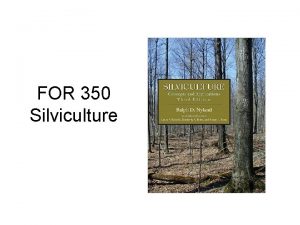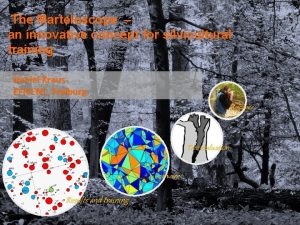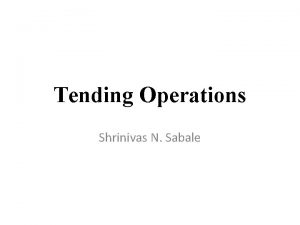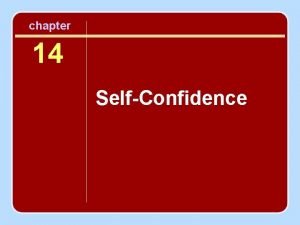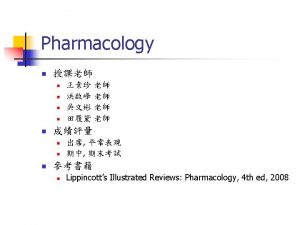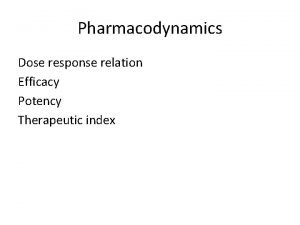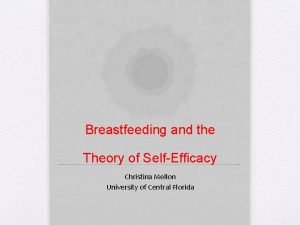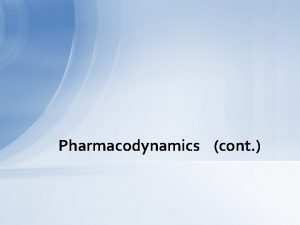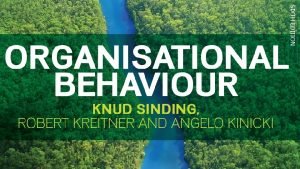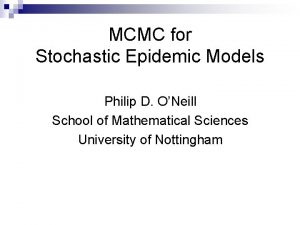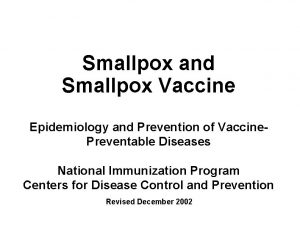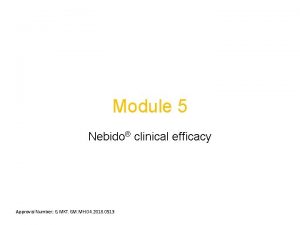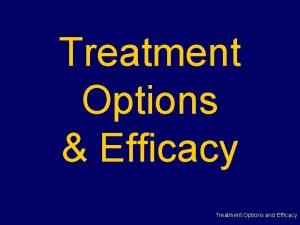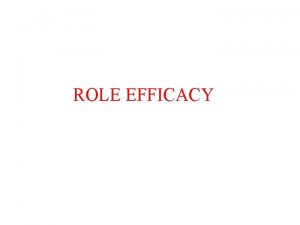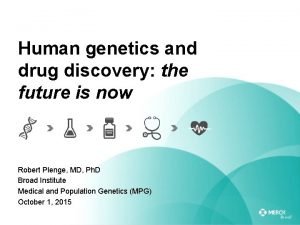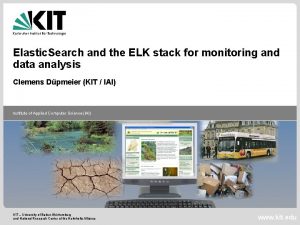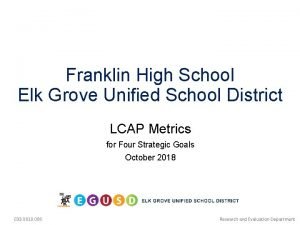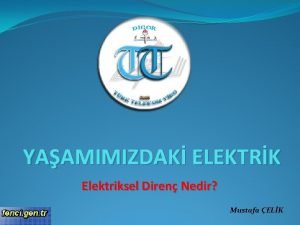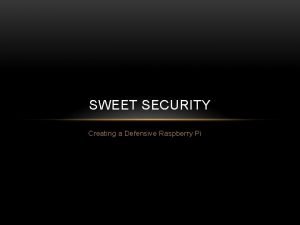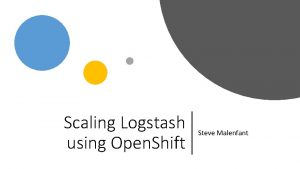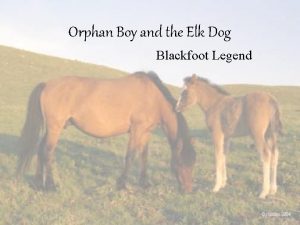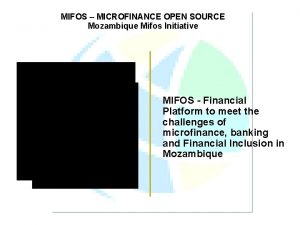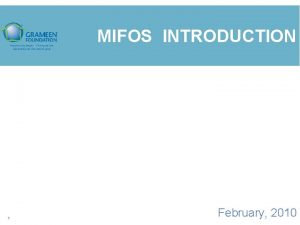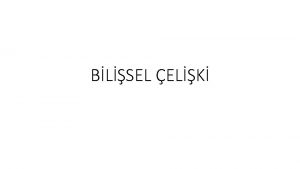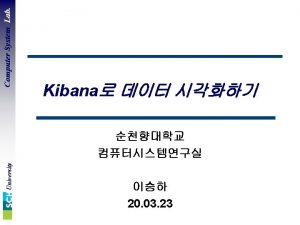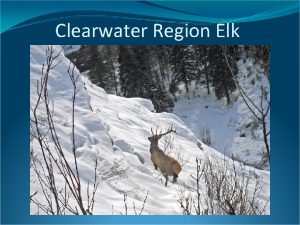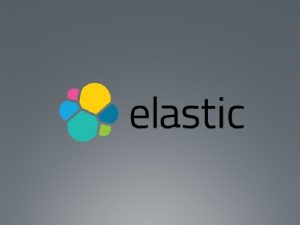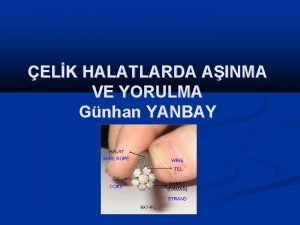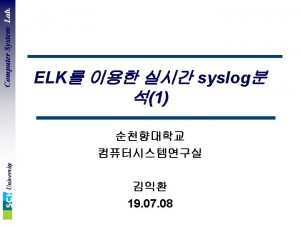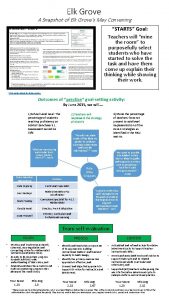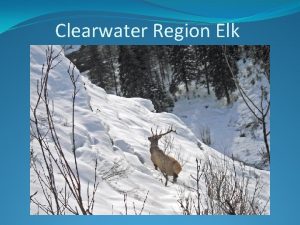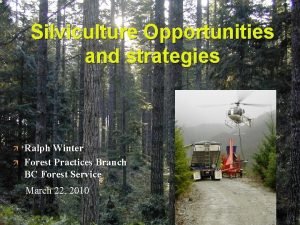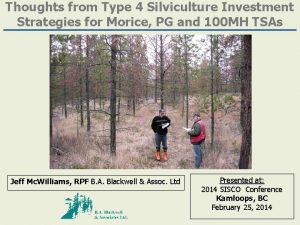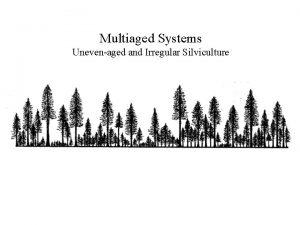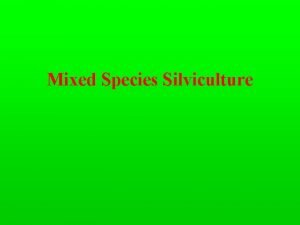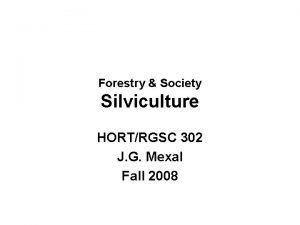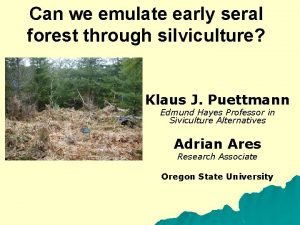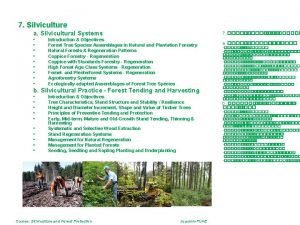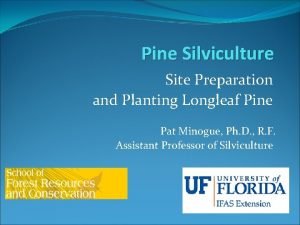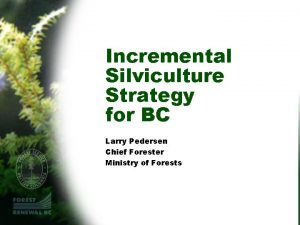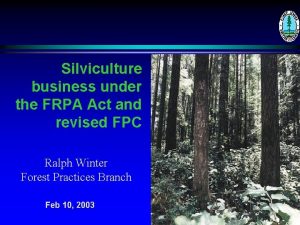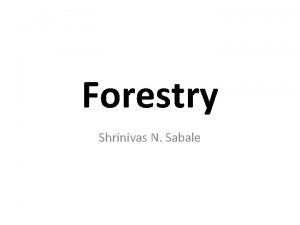EFFICACY OF MIFOS ELK SILVICULTURE STRATEGIES z 0






























- Slides: 30

EFFICACY OF MIFO’S ELK SILVICULTURE STRATEGIES z 0 0

» Point: » Sub-point <#> 1

A) B) A) 2 y/o Fdctrampled and browsed B) 3 y/o Fdcbrowsed, recovering A) 5 y/o Fdccontinuous browse, no clear leader D) C) 2 B) 10 y/o Fdc. NFG, cambial scarring led to leader death

A) B) C) A) Browsed 3 y/o unconed Cw B) 6 y/o coned Cw C) 8 y/o unconed Yc 3

STRATEGIES 1. Delay planting until April 2. Protection 3. Natural Regeneration » Point: » 4. Replants Sub-point 5. Plant more browse resistant species: » Pw, Ss, Dr, Bp, Bg 6. Plant at higher densities <#> 4

Plant 1200 sph w/ Ss 100% Plant Up to 100% Cw/Yc Up to 20%Cw/Yc » Point: » Sub-point Up to 20% Cw/Yc Max 10% Cw/Yc Plant mm 1/mm 2 Nat regen vm 1/vm 2/MH Plant 1200 sph w/ Pw 10 ha/yr Cw caging <#> 5

IMPACTS » What are the impacts of these strategies? » Point: » » Costs? » Species shift? Sub-point » Timber Supply? » How effective is each strategy? <#> 6

COSTS High elk densities will increase costs due to: -Replants -Coning/Caging -Planting larger stock (412 A vs 410) » Point: » -Planting higher densities (1200 vs 1000) Sub-point -Using more expensive seed (Pw vs Fdc) -Additional surveys & 1. 5 p/ha vs 1 p/ha = $250, 000/year =$400/ha in xm 2 or $120/ha TFL 39 Blk 2 <#> 7

EFFICACY- NATURAL REGENERATION » 900 ha of stocking surveys in 2016/17 » Only 10% area needed planting » Point: » » Saved approx. $780, 000 on Initial Planting Sub-point » No significant change in density or species » WS Nats in vm 2: Hw 48 Ba 29 Yc 12 Hm 9 Cw 2, 875 WS sph » WS Planted in vm 2: Hw 55 Ba 23 Yc 10 Hm 5 Fdc 4 Cw 2 Bp 1, 830 WS Sph Species Comp & WS Density <#> 8

EFFICACY-NATURAL REGENERATION » Point: » Genetic Gain Regen Delay » With 100% survival, genetic gain » Timber supply regen delay ≠ silv increases AAC for TFL 39 Blk 2 by 2. 4% milestone » In the vm 1/vm 2, we have 43% mortality » Natural regen is extending timber Sub-point of our planted stock. » In the MHmm 1, we have 80% mortality of our planted stock Genetic Gain & Regen Delay supply regen delay by 0. 5 years, from 0. 2 to 0. 7. » Currently modeled at 1 yrs <#> 9

EFFICACY-NATURAL REGEN Planted 0. 85 OAF 800 700 Yield (m 3/ha) 600 -20% 500 400 » Point: » 300 Sub-point Natural 0. 85 OAF 200 100 0 1 2 Plant, OAF 0. 85 3 4 5 Decade Plant, OAF 0. 7 6 7 8 Nat, OAF 0. 85 *Accuracy questionable- TIPSY limitations* Spatial Distribution <#> 10

MODELLED VS. REALITY Plant OAF 0. 7 » Point: » Sub-point Spatial Distribution <#> 11

EFFICACY- REPLANTS » $150/ha on replants in xm 2 (700 ha across 2500 ha sample) » Benefits: » Increasing WS average by 100 sph » Point: » » Increasing Fdc WS component (67 to 76%) » Improving stem distribution-> less clumpy Sub-point » Which generates 68 m 3/ha » Current wood price= $102/m 3 » $102/m 3 * 68 m 3/ha= $6940/ha <#> 12

EFFICACY-BROWSE RESISTANT » 55% Fdc survival, 95% Pw/Ss survival, MSS=600 » Plant 100% Fdc @ 1000 sph= 550 WS, NSR » Plant Fdc 80 Pw/Ss 20 @ 1000 sph= 630 WS, SR » End up with Fdc 70 Pw 30 » Point: » Sub-point » TIPSY: 3% increase Ss, 8% decrease Pw » Fdc 77 Pw 23 570 FG sph- FAIL Yield (m 3/ha) » Long term: 65% Pw survival 1000 800 600 400 200 0 1 2 3 4 5 Decade Pw Fdc Ss <#> 13 6 7 8

EFFICACYHIGHER DENSITIES » 55% Fdc survival » MSS=600 » Point: » Plant 100% Fdc @ 1000 sph= 550 WS, NSR » Sub-point » Plant 100% Fdc @ 1200 sph= 660 WS, SR » Yay! Elk did not eat proportionally more » Yr 60 = 4% gain in xm 2, 3% gain in vm 1 <#> 14

EFFICACY- COMBINED 1200 SPH + PW/SS Plant Fdc 80 Pw 20 @ 1200 sph=755 WS, SR + Hw nat infill: We are averaging 825 WS sph (but with 16% WS Hw) » Point: Sub-point Replant Area (ha) » 400 350 300 250 200 150 100 50 0 2011 2012 2013 2014 Year 2015 2016 2017 2018 <#> 15

TIMBER SUPPLY- XM 2 YIELDS 800 700 » Point: » Yield (m 3/ha) 600 -23% 500 400 -33% 300 Sub-point 200 100 0 1 2 Potential 3 4 Decade High Elk-Current 5 6 High Elk-No Replants <#> 16 7

DO THEY PAY OFF? Activity Short Term (licensee) Long Term (government) Natural Regen Yes- cheapest strategy Yes/No Replants Yes- to meet regen obligations, higher density can be cheaper Higher Density Yes, but only if a replant is guaranteed at 1000 sph No, unless you expect 2 -3 replants No Ss 20% Yes- Meet RD & FG with lowest costs Yes-$150/ha now will generate $7, 800/ha in Yr 60 for the whole xm 2 Yes, $161/ha now will generate $2652/ha in Yr 60 Improved spatial distribution would lead to increased volumes Yes- $4500/ha now to generate $55, 000/ha more than planting Fdc No- more volume, less value. $8800/ha less than straight Fdc. Pw 20% Yes-Meet RD with lowest costs No- Not guaranteed to meet FG No- less volume, less value. $9300/ha less than straight Fdc. » Point: Coning Fdc » Sub-point Caging Cw <#> 17

SUMMARY- STRATEGIES » Positive strategies to meet Regen Delay: Replants, caging, higher densities, browse resistant species, natural regen » Positive strategies for future timber supply: Replants, caging, higher densities » Point: » » Planting Ss/Pw help meet RD obligations, but are less profitable than Sub-point planting 100% Fdc and accepting a lower density » Elk spending: $400/ha in the xm 2 or $250, 000/year » Elk may decrease yields by 33% in the xm 2 ($24, 000/ha future value) » Poor spatial distribution (for both planted and natural stands) may cause 20% yield reductions in the vm 2 ($8700/ha future value) <#> 18

OPPORTUNITIES » Offset timber supply implications with fertilization » FIA and LBI funding (ex. Carbon funding initiative) » Cost recovery for additional elk related treatments (direct or appraisal) » FRPA Section 108(2)-> amend FPPR Section 96(1. 1) to include elk » Point: » » Improve communication regarding elk transplant plans Sub-point » Better access to Elk Population Unit (EPU) population data » Industry input on EPU objectives » Further analysis: elk impact on timber quality and species composition » Share your experiences! <#> 19

QUESTIONS? » Point: » Sub-point <#> 20

ACTIVITY SUMMARY 2009 -2017: 47 ha caging * $4500/ha= $211, 500 152 ha coning * $3000/ha = $456, 000 » Point: 1428 ha » replants * $530/ha= $756, 840 Sub-point 750 ha High density * $161/ha=$120, 900 (2014 -17) 3, 470, 000 412 A * $0. 12= $416, 400 (2011 -17) 159, 000 512 A * $0. 18=$28, 620 (2011 -17) TOTAL= $1, 990, 220 or $221, 000 per year <#> 21

EFFICACY- SS » 55% Fdc survival, 95% Ss survival, MSS=600 » Plant 100% Fdc @ 1000 sph= 550 WS, NSR » Point: » Plant Fdc 80 Ss 20 @ 1000 sph= 630 WS, SR » Sub-point » End up with Fdc 70 Ss 30 » 3% Yield Increase Yr 60 <#> 22

INCREASED COSTS? In the CWH xm 2 (16, 500 ha THLB- 18%): Low (1994 -2002) $42 High (2009 -2017) $150/ha No surplus $130/ha Higher Densities No surplus $113/ha TOTAL= $42/ha $393/ha Elk Related Replants Coning/Caging » Point: » Sub-point At a landscape level (91, 666 ha THLB): Elk Related Replants Coning/Caging Higher Densities TOTAL= Low (1994 -2002) $7/ha High (2009 -2017) $52/ha $4/ha no surplus $11/ha $37/ha $32/ha $121/ha <#> 23

MID ISLAND • 96, 500 ha with high elk density (>1 elk/2. 5 km 2) – 62% • 45, 000 ha with moderate elk density (1 elk/2. 5 -10 km 2)- 28% • 1300 elk or 25% of coastal BC’s elk population! Estimated Elk Current Trend Habitat Population (Stable/Increasing/ Suitability Unit Estimate Decreasing) (low/mod/high) Estimated Carrying Capacity (K) Target Pop’n objective Eve/Tsitika 202 S H 386 232 Maintain Adam 182 S VH 315 189 Maintain Lower Salmon 231 S-I VH 361 231 Maintain Amor 95 S-I H 146 95 Maintain White 196 S VH 340 204 Maintain Upper Salmon 422 S-I VH 670 422 Maintain 24

SPECIES SHIFT Are we causing a species shift? » Planting less Cw/Yc » Point: » » Increase in Ba due to natural regeneration strategy » Hardwood management Sub-point » Pushing browse resistant species <#> 25

PLANTED SPECIES % Low Elk: 1994 -2002 High Elk: 2009 -2017 3% 1% 1% 7% 16% 4% 34% » Point: » 8% 35% 9% Sub-point 13% 9% 23% 37% <#> 26

PLANTED VS WS - 2009 -2017 2% 3% 1% 3%1% 7% 6% 8% » Point: » 5% 35% 9% 45% 14% Sub-point 37% Planted Species % 24% WS Species % <#> 27

NATURAL REGEN- GENETIC GAIN » Point: » xm 2 mm 1 mm 2 vm 1 vm 2 MHmm 1 % Area Planted 100 87 82 84 75 73 Average Plant Density (FP + IP) 976 931 821 840 836 775 SPH w/ Genetic Gain Sub-point based on planting 898 931 771 790 744 217 Max SPH w/ Genetic Gain based on survival 600 490 474 405 40 % Difference in Genetic Gain Crop Trees 33% 47% 37% 40% 46% 82% Weighted average by area= 45% loss of genetic gain stock due to survival issues <#> 28

EFFICACY- PROTECTION » Cones on Fdc: » Guarantees SR status » Meets Y 2 BH, GU, FG faster » Cones on Cw: » Point: » » Approx. 2 -3 longer to achieve FG Sub-point » Cw rarely make it into FG label » Caging on Cw: » Assuming you wait long enough to remove, guarantees SR status & Cw component <#> 29
 Silvicultural
Silvicultural Scope of silviculture
Scope of silviculture Tending operations in forestry ppt
Tending operations in forestry ppt Sources of self efficacy
Sources of self efficacy Efficacy potency
Efficacy potency Collective teacher efficacy
Collective teacher efficacy Therapeutic index
Therapeutic index Luminous efficacy comparison chart
Luminous efficacy comparison chart Conclusion of breastfeeding
Conclusion of breastfeeding Albert bandura self efficacy
Albert bandura self efficacy Potency vs efficacy
Potency vs efficacy Drug efficacy
Drug efficacy Collective teacher efficacy
Collective teacher efficacy Types of personality in organisational behaviour
Types of personality in organisational behaviour Vaccine efficacy
Vaccine efficacy Vaccine efficacy
Vaccine efficacy Nebido efficacy
Nebido efficacy Efficacy therapy
Efficacy therapy Collective teacher efficacy
Collective teacher efficacy What is role efficacy
What is role efficacy Drug efficacy
Drug efficacy Elk stack for monitoring
Elk stack for monitoring Ghost dance movement apush
Ghost dance movement apush Franklin high elk grove
Franklin high elk grove Letken
Letken Bro ids raspberry pi
Bro ids raspberry pi Elk grove regional scholarship
Elk grove regional scholarship Scaling logstash
Scaling logstash Elk river lutheran
Elk river lutheran Command.com
Command.com The orphan boy and the elk dog summary
The orphan boy and the elk dog summary
